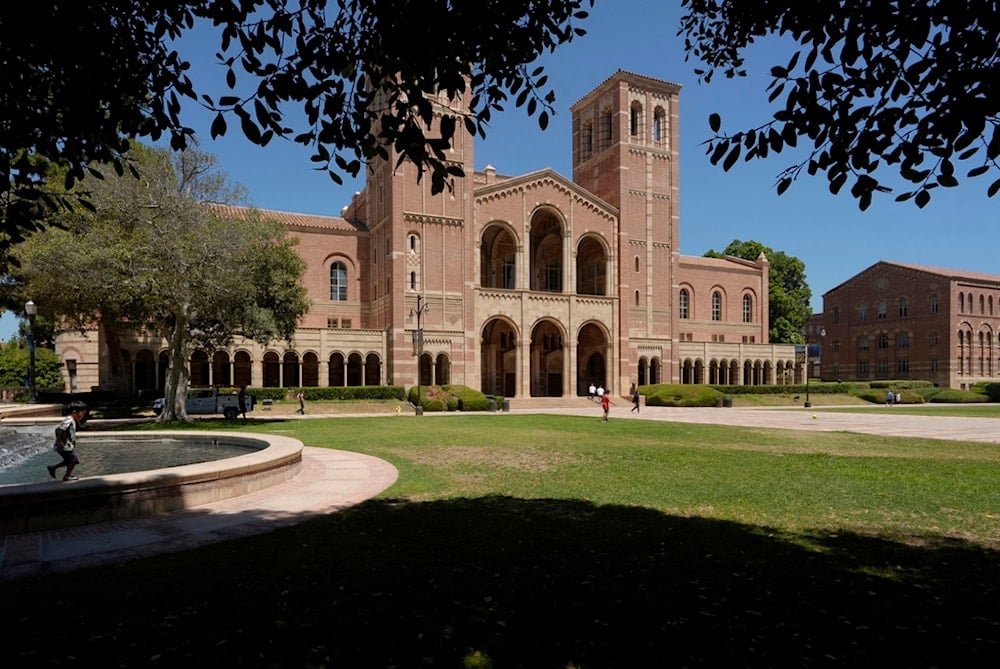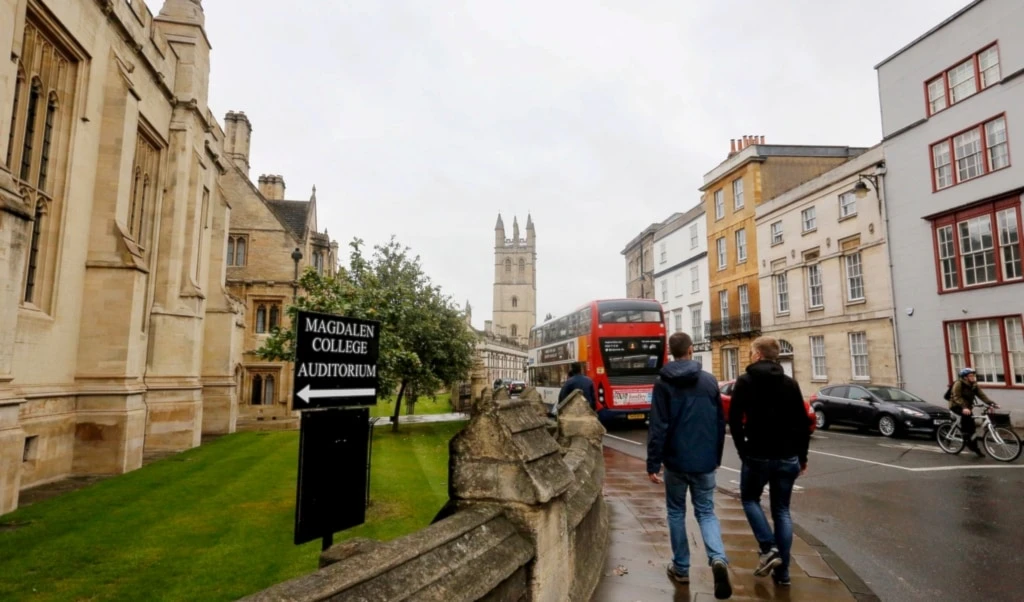International student numbers drop sharply under Trump administration
International student arrivals to the US fell 19% this year amid tighter visa rules and political uncertainty under the Trump administration.
-

Children play outside Royce Hall at the University of California, Los Angeles, campus in Los Angeles, August 15, 2024 (AP)
The number of international students arriving in the US has dropped significantly, with preliminary federal data showing a 19% decline in August 2025 compared to the same month last year, the Los Angeles Times reported. The fall is being attributed to visa restrictions, a shifting political climate under the Trump administration, and rising costs at US universities.
The data, released by the US National Travel and Tourism Office, highlight the largest monthly drop this year in student visa arrivals, which totaled 313,138 in August. Similar declines were also recorded in June and July.
The figures reflect growing concerns within US higher education institutions about international enrollment trends, which have financial and reputational implications for colleges that depend heavily on tuition from foreign students.
Read more: Japan universities offer haven to foreign scholars amid US crackdown
Pandemic rebound reversed by new restrictions
After several years of post-pandemic recovery, international enrollment appears to be stalling. About 1.1 million foreign students studied in the US last year, providing key revenue for many tuition-driven institutions.
International students are ineligible for federal financial aid and often pay full tuition, making them a financial asset for universities.
However, recent federal policy changes have created new challenges for prospective students. In May, the State Department temporarily halted visa interview scheduling, resuming three weeks later with stricter screening rules, including social media vetting.
A new travel ban, announced in June and targeting 19 countries, primarily in Africa, Asia, and the Middle East, added to the uncertainty. These regions recorded the sharpest declines in student arrivals this August, with:
- 45% drop from India
- 33% drop from Africa
- 24% from Asia overall
- 17% from the Middle East
Read more: US universities shield foreign students from Trump deportation threats
California universities brace for enrollment shift
California, the state with the largest international student population, has not yet published full enrollment data for Fall 2025, but universities are preparing for potential drops.
The University of California (UC) system reported a 17% increase in international admissions, not enrollment, with 3,263 more offers made than last year. UC also admitted 100,947 first-year California students, up more than 7% from last year.
UC explained that it admitted more international students due to “growing uncertainty” about whether they would actually enroll. The university pointed out that accepted international applicants typically enroll at much lower rates than California residents and that the cost for out-of-state students has risen.
Rising costs also play a role; nonresident tuition rose 10% last year to $37,602 from $34,200.
At the University of Southern California (USC), overall international enrollment declined slightly, from 12,374 to 11,959. Still, USC saw an increase in first-year international students, who now make up 21% of its incoming class, up from 17% last year.
Other major campuses like UC Berkeley (12,441), UC San Diego (10,467), and UCLA (10,446) remain among the top destinations, particularly for students in STEM fields.
Student concerns grow over climate, costs
Visa issues and policy changes have also created anxiety among students already in the US. Some avoided travel over the summer for fear of reentry problems. Others are reconsidering future study plans due to changes in visa security, funding access, and the broader political environment.
“By my senior year, a lot of the pull factors became push factors,” Syed Tamim Ahmad, a UCLA student originally from Dubai, told the LA Times. Ahmad cited funding cuts to research and fears over online surveillance as reasons for shifting his medical school plans to Australia.
Consultants working with international families echoed similar concerns. Zeynep Bowlus, based in Istanbul, told the LA Times her clients are increasingly skeptical of the value of an American degree.
Elisabeth Marksteiner, in Cambridge, UK, now advises families to prepare backup plans in case of visa complications.
Competing countries capitalize on US declines
Universities in the UK, Canada, and Australia have reported surges in international applications, in part due to growing concerns over the US admissions and immigration environment.
“The presumption is that things will carry on as they were. My presumption is, they won’t,” Marksteiner told the LA Times.
While the US remains a global leader in higher education, the emerging shift in international enrollment in 2025 suggests it may face steeper competition ahead unless visa and policy uncertainties are resolved.

 4 Min Read
4 Min Read










